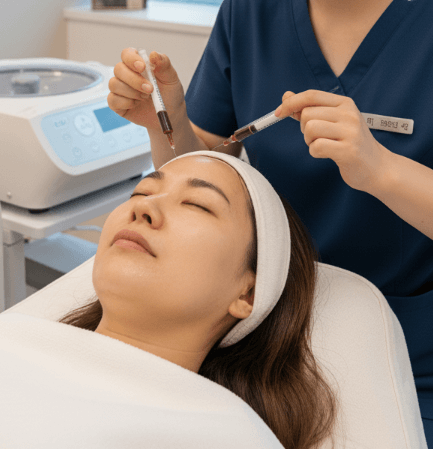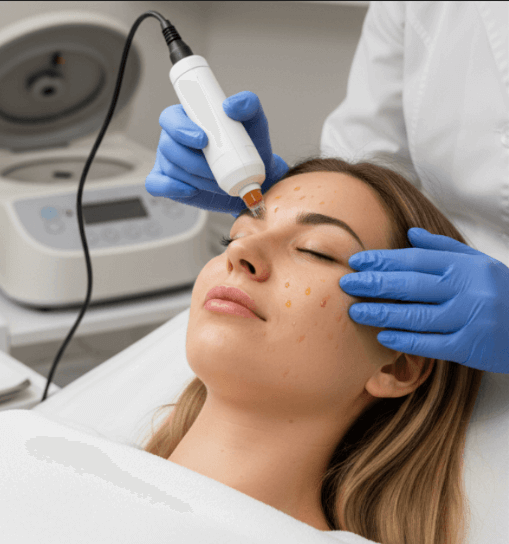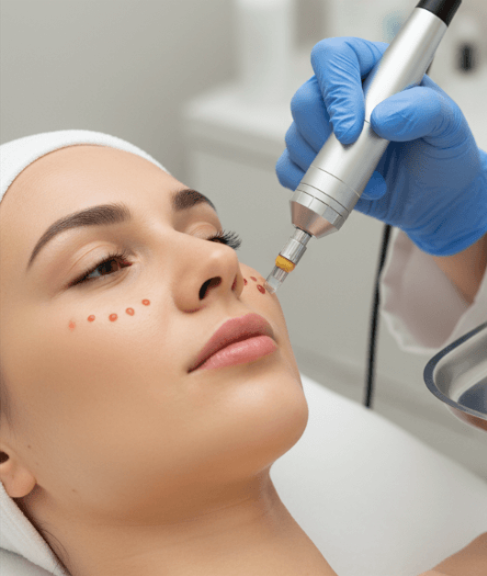When it comes to beauty, symmetry and proportion play a huge role—and nowhere is this more evident than in double eyelid surgery. In Korea, plastic surgeons don’t just create an eyelid fold—they design it based on scientific aesthetic principles, particularly the Golden Ratio. But what is this ratio, and how does it guide the artistry behind Korea’s most natural-looking results?
Let’s dive deeper.
📐 What Is the Golden Ratio in Facial Aesthetics?
The Golden Ratio, also known as Phi (1:1.618), is a mathematical proportion found in nature, architecture, and yes—beautiful faces. According to this principle, facial features that adhere to certain proportional guidelines are perceived as more balanced and aesthetically pleasing.
In facial design, it applies to:
- The distance between the eyes
- The width of the eyes relative to the face
- The proportions of the upper, middle, and lower thirds of the face
- The eye-to-eyebrow-to-forehead harmony
- Eyelid height and fold symmetry
🧠 Korean surgeons use these measurements as an internal framework, not to standardize beauty—but to guide natural, harmonious results.
👁 Why Eyelid Balance Matters More Than Just a Crease
In double eyelid surgery, achieving an upper lid fold isn’t enough. Korean doctors focus on “periorbital balance”—how the eyelids interact with the eyes, eyebrows, and overall face shape.
They assess:
- Eye width vs. eye height
- Eyelid fold height (low, medium, high)
- Inner and outer canthal shape (epicanthoplasty is sometimes included)
- Asymmetry correction
- Eyebrow position relative to the crease
- Forehead tension that affects the lid
⚖️ Goal: Symmetry + Softness + Function
Rather than chasing a high crease, Korean surgeons emphasize what suits your face best, blending mathematical precision with visual artistry.
🧑⚕️ How Korean Surgeons Apply the Golden Ratio
Korean surgeons typically perform facial analysis during consultation using:
- Photographic measurements of your eyes and face
- 3D imaging tools or digital simulation
- Reference points like pupil center, brow apex, nasal root, and lateral canthus
Key measurements considered:
| Feature | Ideal Golden Ratio |
|---|---|
| Distance between eyes | ≈ One eye width |
| Eye width to facial width | 1:5 ratio |
| Eyelid crease to eyebrow distance | Balanced with eye height |
| Upper vs. lower eyelid exposure | Around 1:1 ratio when eyes are open |
🎯 Based on these proportions, surgeons determine where the crease should be placed for optimal balance and ethnically appropriate beauty.
✨ Examples of Eyelid Balance Using the Golden Ratio
🔹 Case A: Round Eyes, Low Brow
- Surgeon may recommend a lower crease height to maintain softness
- Avoids harsh or “surprised” expression
🔹 Case B: Narrow Eyes, High Brow
- Slightly higher fold with epicanthoplasty can open the eyes while keeping harmony
- Balance between upper lid exposure and eye length is restored
🔹 Case C: Uneven Eyes (Asymmetry)
- Golden Ratio helps guide custom fold height on each side
- Ensures bilateral harmony and more symmetrical gaze
🧬 It’s Not Just Math—It’s Personalization
While the Golden Ratio is a guide, Korean surgeons never apply it blindly. Every patient’s:
- Ethnicity
- Skin thickness
- Eye muscle strength (levator function)
- Lifestyle and aesthetic preference
are taken into account.
📌 The ratio serves as a foundation, not a rule—allowing for artistry, cultural nuance, and patient individuality.
🏥 Why Korean Clinics Excel in Eyelid Balance
Korean plastic surgeons are highly trained to:
- Assess facial proportions instinctively
- Combine Western anatomical studies with Eastern aesthetic ideals
- Use minimally invasive techniques that respect natural folds
- Provide holistic eye surgery plans, including ptosis correction, fat repositioning, and brow work when needed
🥇 This is why Korean double eyelid results often appear so natural, elegant, and ethnically appropriate—they’re based on timeless principles of beauty and symmetry.
🌟 Final Takeaway
Understanding the Golden Ratio helps explain why Korean double eyelid surgery stands out. It’s not just about creating a fold—it’s about crafting facial harmony that looks effortless.
So, when you choose a Korean surgeon, you’re not just getting a technical procedure—you’re getting a tailored, mathematically grounded, and aesthetically driven transformation.




